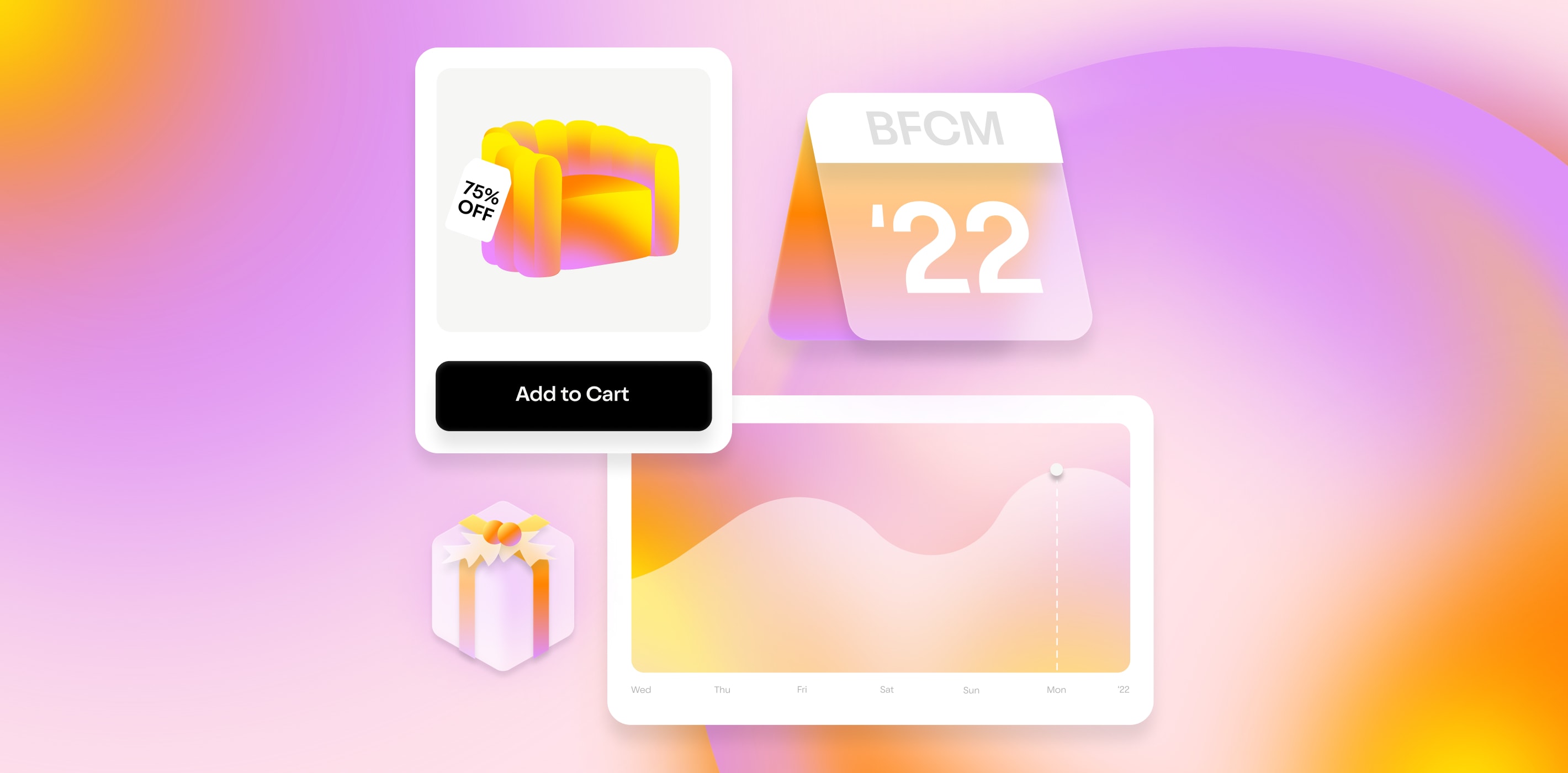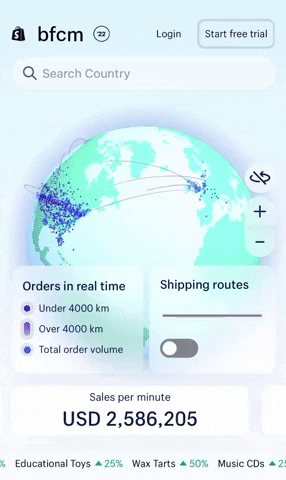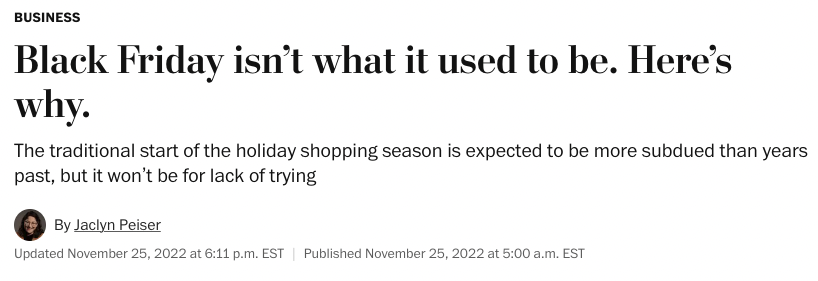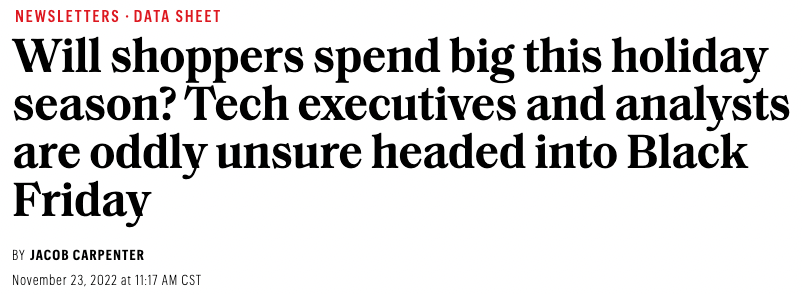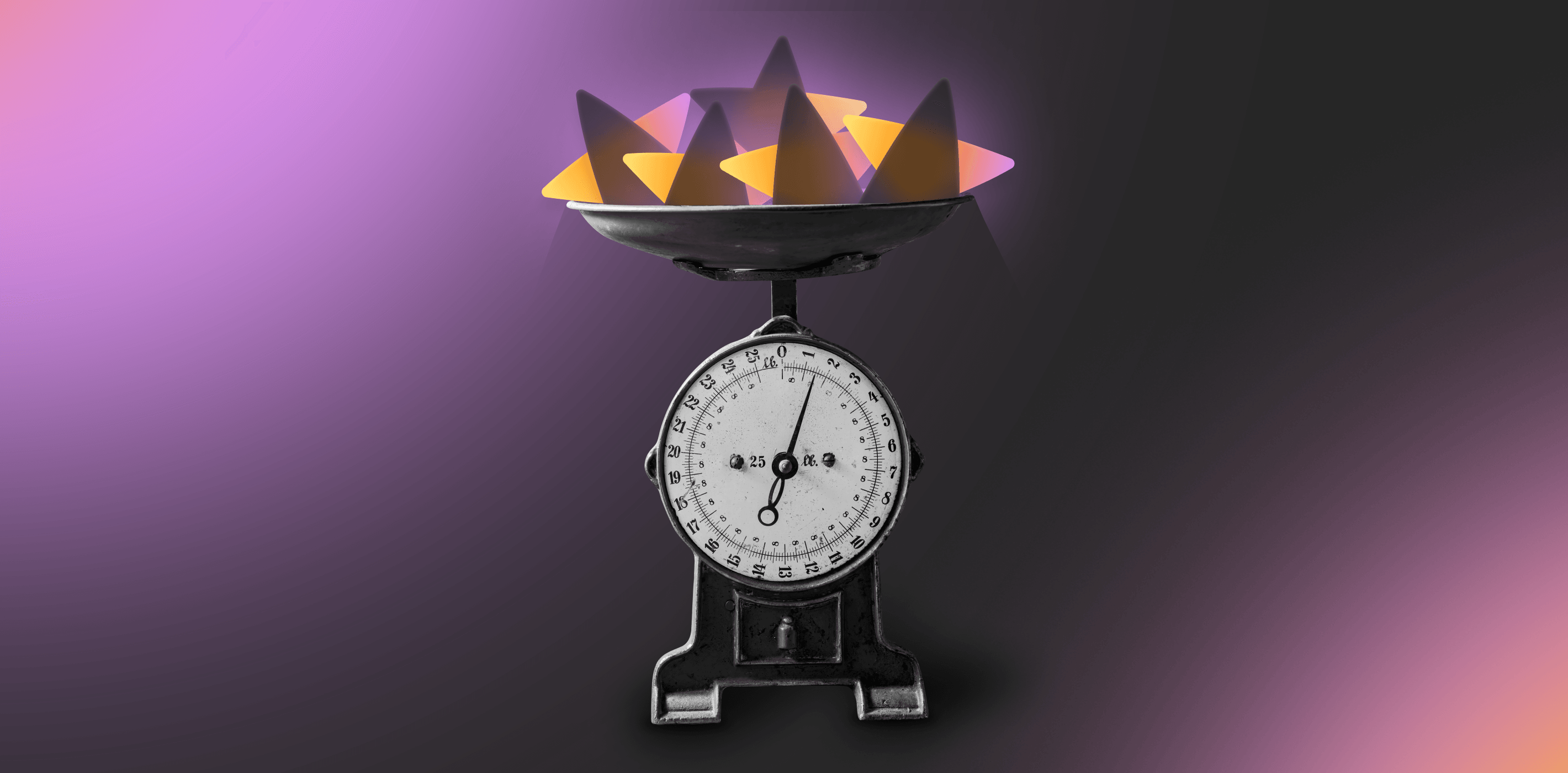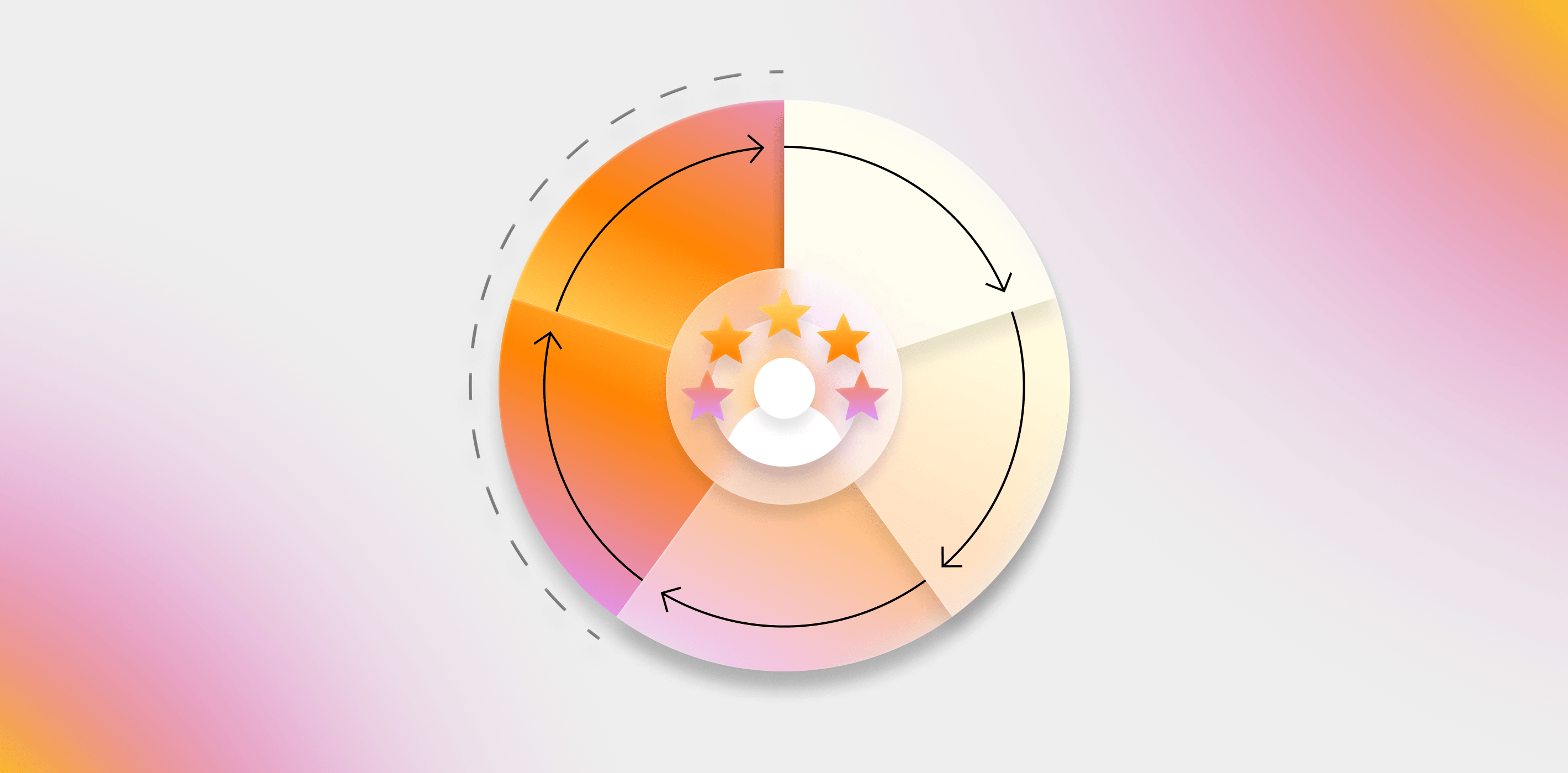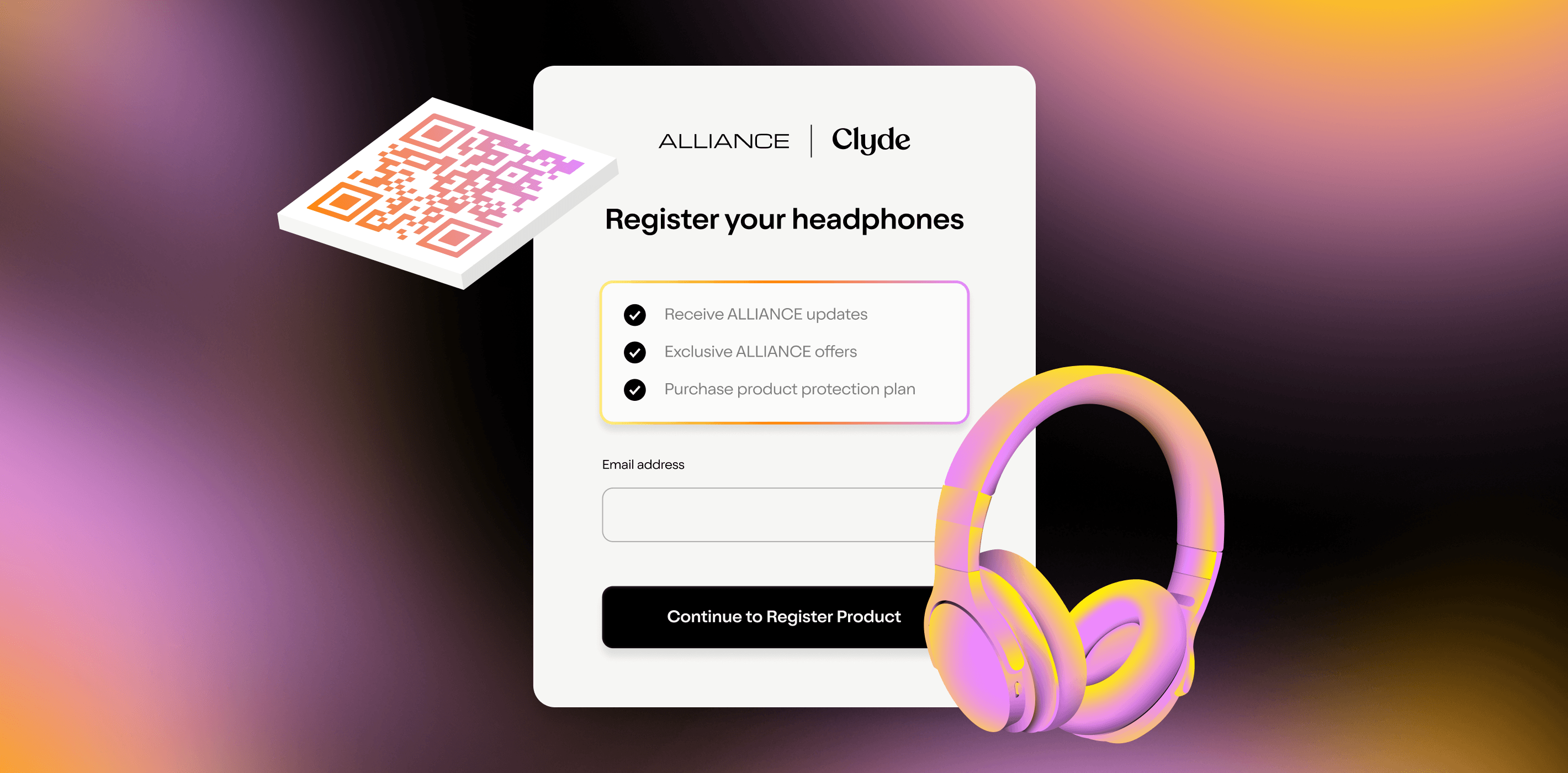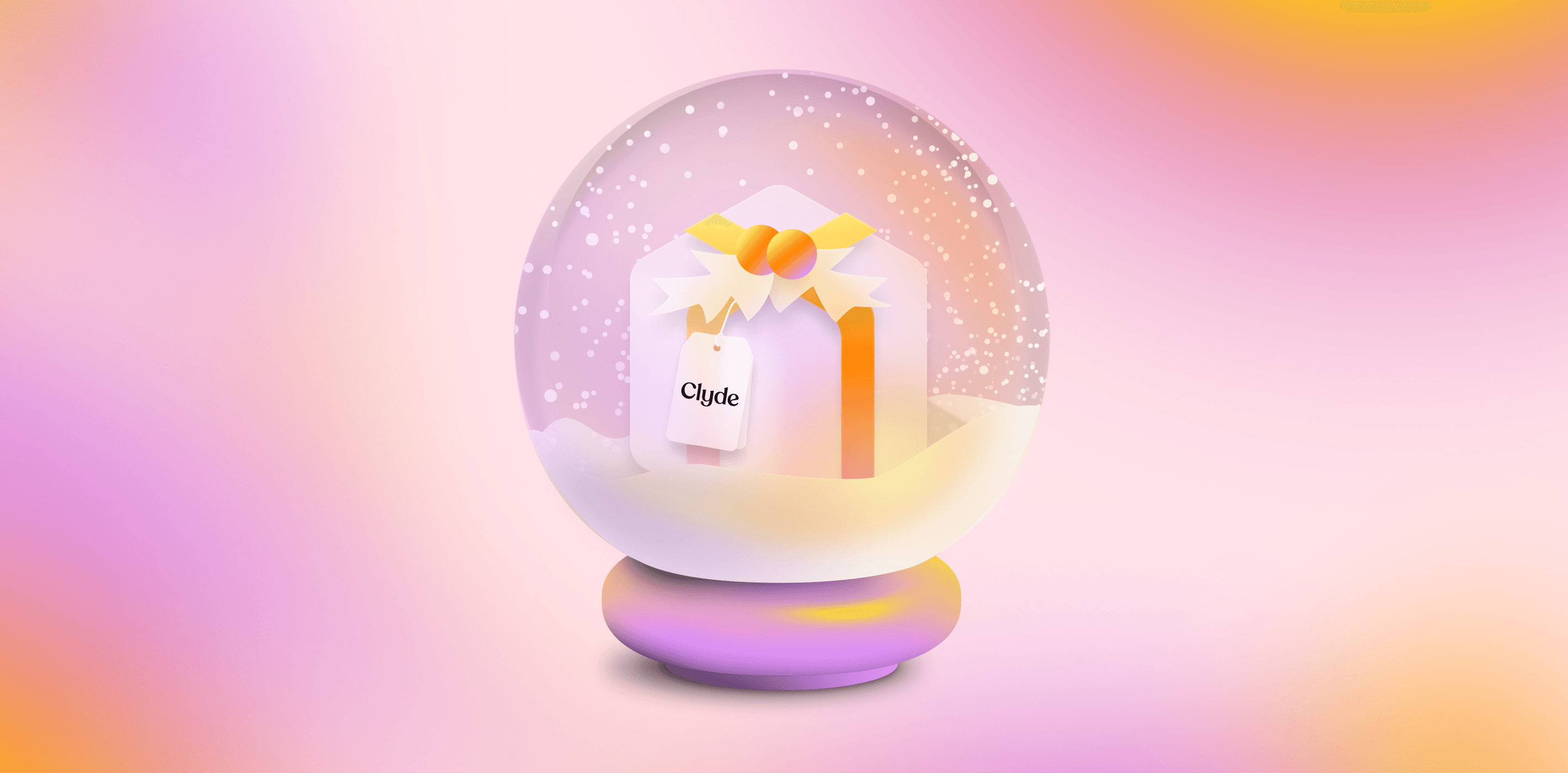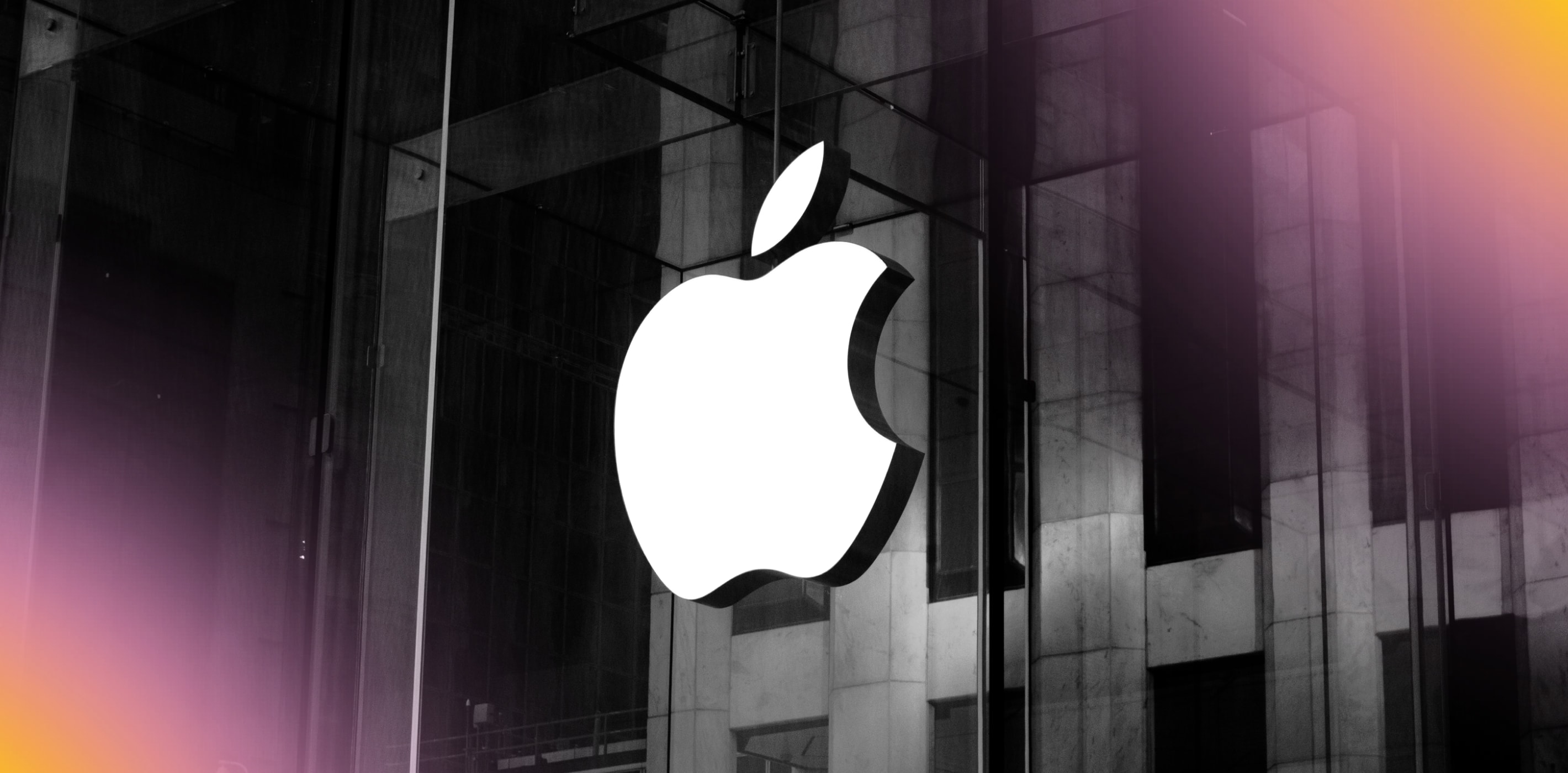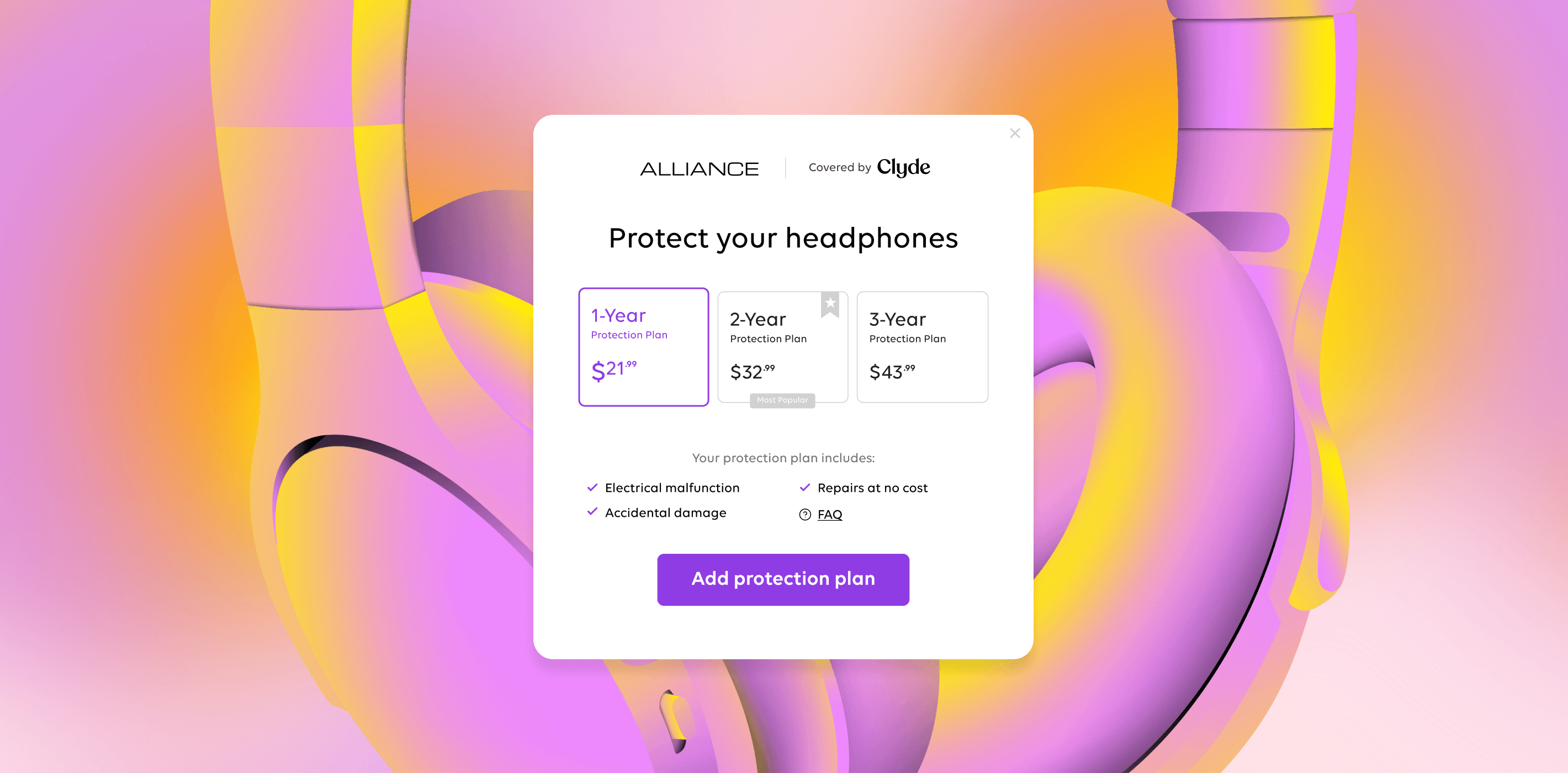Inflation or not, people still love a bargain during Black Friday Cyber Monday. Sales may not have been as ridiculous as we’ve seen before, but there are still plenty of insights retailers can lean into in 2023 from this holiday shopping season. Some people watch football on Thanksgiving weekend. Others are parade people. Here at Clyde, we were glued to Shopify’s Black Friday Cyber Monday Live Map , watching data roll in and seeing the map light up with every new order during the biggest online shopping weekend of the year.
It’s like the NORAD Santa Tracker , but with fewer reindeer and more shipping companies.
Over the last two years, pandemic-related supply chain issues, pent-up demand, and in-person shopping restrictions have changed how, when, and where people shop during BFCM.
So how did it stack up this year? We knew it would be different, notably that the shopping season would be longer and flatter, with fewer door-busting discounts and more price pressure .
But there were a few behaviors retailers should be aware of and adjust for as they move into 2023.
1) Ecommerce sales hit record highs (kind of)
Yes, ecommerce sales exceeded previous years, but not because of a record number of people shopping. Headlines from the Washington Post and Insider posited that 2022’s Black Friday Cyber Monday numbers would fall short of years before.
But that’s not quite what happened.
2022 broke records. On Black Friday Cyber Monday weekend, Shopify retailers logged 19% more gross revenue than 2021 — $7.5 billion in goods. Additionally, Adobe data found that online spending on Black Friday alone hit $9.1 billion this year, beating last year by 2.3%.
Shopify and Adobe data reported net spending without specifying the number of goods sold. Without knowing that number, the increase in spending from 2021 to 2022 could be attributed to inflation, which rose worldwide in 2022 .
What this means for 2023: While ecommerce spending is technically up, that increase is due mainly to inflation. Brands need to continue emphasizing the value of their product.
2) “Pre-inflation” pricing was the marketing tactic of the season.
The average American shopper plans to spend $932 on holiday gifts this year. That’s just short of the 2019 high of $942. Those numbers don’t account for inflation, meaning buyers may buy fewer total gifts while hovering around the same final budget.
With those higher prices in mind, some retailers directly addressed consumer concerns about inflation by heralding special returns to pre-inflation pricing.
J.C. Penney offered old-school prices on shopper favorites like Instant Pots and boots. ALDI offered a “Thanksgiving Price Rewind” on food for the holiday, matching the discounts originally provided in 2019. Walmart did something similar, offering “this year’s Thanksgiving meal at last year’s price.”
What this means for 2023: Brands need to understand what drives customer willingness to pay and adjust pricing and promotion accordingly.
3) Mobile commerce hit an all-time high, but desktop reigns supreme.
In my house, three people were shopping in the hours leading up to Thanksgiving dinner — and no one had to leave the couch.
Thanksgiving has always been a strong day for mobile sales since people often search for deals from the den, the kitchen, or even the dining room table as they wait for the turkey to hit the table. Mobile commerce made up 63% of all online retail sales across the weekend, and interestingly, while mobile outperformed desktop in terms of web traffic and sales percentage share, desktop had a higher AOV ($126.08 compared to mobile’s $99.62), meaning people probably prefer to purchase more expensive items via desktop.
What this means for 2023: Data suggests people may prefer desktops for higher ticket items. Use mobile and desktop ecommerce in tandem with each other. How your audience uses each platform and your goods' cost will factor in.
4) Electronics were popular — as were protection plans for them.
After years of supply chain disruptions, electronics are back. And customers are taking advantage. Electronics sales were among the most popular shopping categories on Black Friday, with sales jumping over 19% compared to an average day in October 2022.
Here at Clyde, we saw a related insight: a jump in electronics protection plans sold. Retailers offer protection plans to enrich the customer’s experience of owning a product and provide peace of mind. If anything happens to a customer’s product or to the product they’re buying as a gift, they’ll be covered.
What this means for 2023: Product categories will fluctuate in popularity and demand. Consider integrating value-adds to make the purchase experience more appealing whether you have the product of the moment or not (product protection and buy-now-pay-later are two great ways to do this).
5) Consumers stretched their dollars with pay-over-time options.
Economic pressures from inflation to wage growth affect how shoppers spend their money each year, with current data showing that people are purchasing less and using more coupons and coupon tracking tools. What doesn’t change is their desire to show their loved ones they care with thoughtful gifts.
This BFCM, many shoppers turned to buy now, pay later (BNPL) options so they could get the goods they wanted and take time to pay the bill. Online orders using BNPL options rose from 8.2% in 2021, to 10.2% in 2022 while in-store BNPL rose 41% year-on-year.
What this means for 2023: BNPL will only continue to grow. Consider whether your margins justify integrating buy-now-pay-later into your checkout flow.
6) “Green Friday” meant less — or more careful — consumption to better care for the environment.
In September and October 2022, Shopify asked shoppers what they cared about, and 40% said they would pay extra for climate-conscious products. 43% said they would be more likely to buy from a brand with sustainability practices like carbon-neutral shipping.
So the ecommerce giant made it happen. For the third year in a row , Shopify paid to offset the carbon footprint of all shipping for orders made on the platform during Black Friday Cyber Monday sales.
Carbon offsetting isn’t the only way to reward responsible consumption. (And carbon offsetting has its own complications, as John Oliver explains quite well here .) Some brands sought to meet buyer expectations about sustainability in different ways. Freitag closed its online store on Black Friday and redirected shoppers to its S.W.A.P. bag exchange program while Patagonia encouraged shoppers to repair their products, buy used products, or donate their money and time.
What this means for 2023: Your customers will tell you what causes are important to them. Ensure your customer personas and any research on sentiment is up to date so you can respond accordingly.
This buying season and beyond, Clyde’s got your back. From product protection plans to seamless registration programs, Clyde’s ownership enrichment platform has what you need to convert shoppers to buyers and buyers to fans. Sign up for a demo today .
SIGN UP FOR OUR NEWSLETTER
